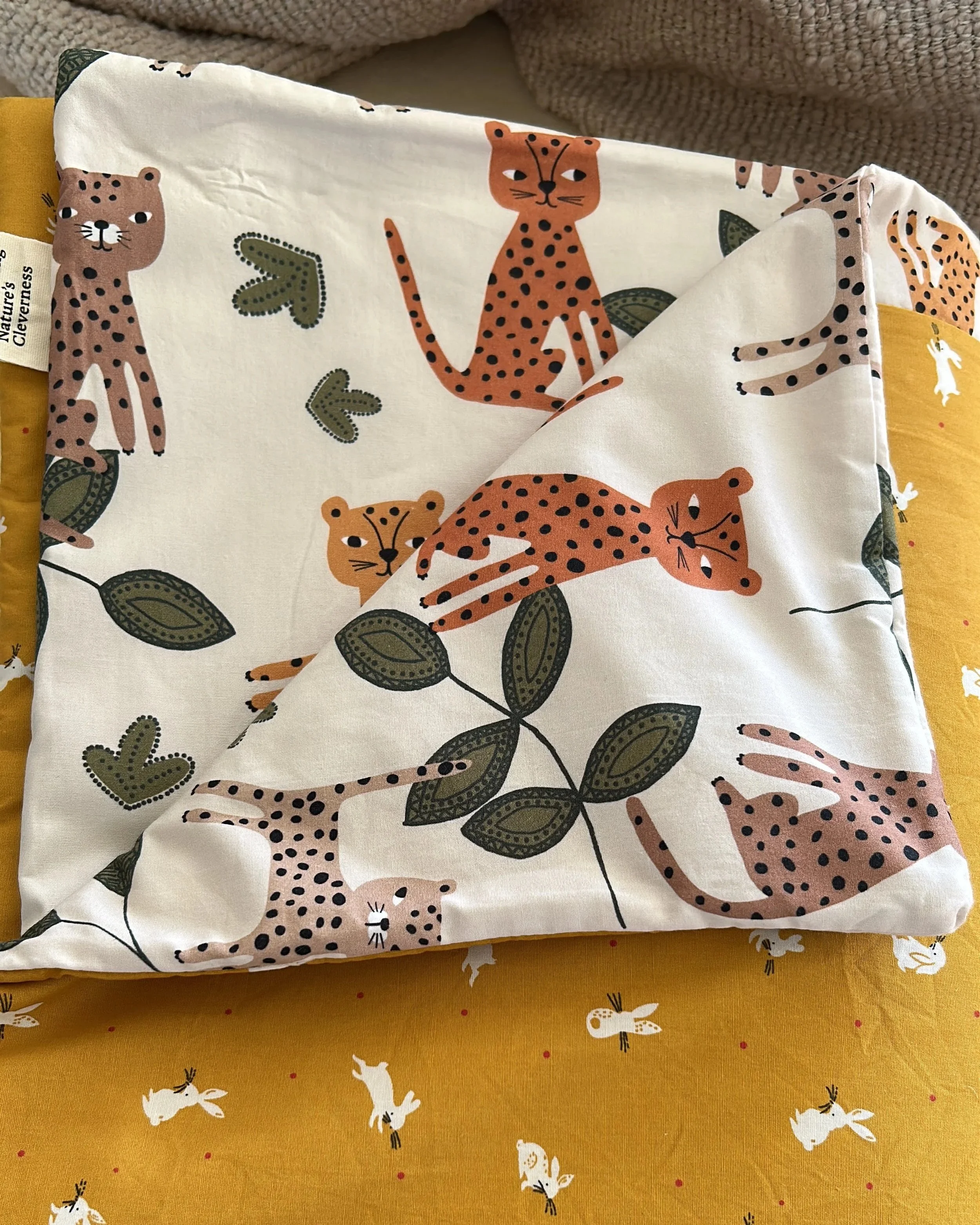Wool Batting for Quilts: A Mindful Material for Quilters
Quilts hold hours of craft and stories, and they are often passed through generations. Choosing natural, strong wool batting aligns what you make with what matters: fibre that breathes, stays fresher and biodegrades at the end of life.
Key Takeaways:
Natural strong wool batting is renewable, biodegradable, naturally flame-resistant and helps reduce microplastics. (Source: IWTO)
Wool manages moisture and odour naturally, so quilts stay fresher between washes and need laundering less often. (Source: Woolmark)
Needle‑punched wool blanketing is a stable, consistent batting option suited to machine and hand quilting; select GSM to match warmth and loft needs. (Source: Wisewool)
What is wool batting, and why does it matter to quilters?
Wool batting is the soft, insulating layer inside a quilt that gives the piece loft, warmth and structure. Unlike polyester batting, 100% strong wool is a natural, renewable fibre grown on sheep and processed into a natural batting or loose fill.
For makers who invest hundreds of hours into a quilt to pass down through generations, the choice of batting is a practical expression of values: durability, tactile comfort and environmental care. When hours of love and hard work are poured into creating a quilt from treasured fabrics, many of them natural, it makes sense to honour that effort with a batting that is equally close to nature.
Choosing wool extends the life of the quilt and makes it worthy of passing down to future generations.
Different WiseLayer™ GSM and Lofts
How does wool compare to other battings?
Pure wool breathes and manages moisture, reducing the clamminess and static that sleepers often experience with synthetic fills. Wool can absorb a significant amount of moisture vapour and release it back into the air, helping regulate the microclimate under a quilt. Wool is also naturally odour-resistant, which means quilts can be aired rather than washed after light use.
Cotton batting offers a flatter, traditional finish that some makers prefer for a vintage look. Washing 100% cotton creates a vintage, puckered, "lived-in" texture due to slight shrinkage between quilting stitches.
Polyester is uniform and inexpensive, but it is plastic, it can trap odours and it contributes to microplastic pollution when laundered. It also requires toxic fire-retardant chemicals that offgas into the environment.
Using wool helps lower the environmental impact of the craft piece you make.
I have been having so much fun making baby quilts and play mats for friends on a very basic home sewing machine. Quite simply, pick your favourite cotton quilting fabric, and choose the weight of wool batting you want to use.
I like to use 200gsmLL or 350gsmHL for quilts, depending on the season and just put the batting between your chosen fabrics and sew them together. I don’t even have to bother with any internal quilting in the piece, as I find the simple stitching around the outside holds perfectly, even with repeated washing.
Nicky Hansen - WiseWool™
Wisewool™ Baby Comforter using 200LL
Is wool safe for babies and sensitive sleepers?
Yes, for most people. True wool allergies are uncommon, and many heirloom quilts use a wool batting wrapped in cotton covers so skin contact is minimised. Choosing a carefully processed, traceable wool product reduces the risk of unwanted chemical residues. When traceability and scouring practices are important for you, look for suppliers like Wisewool™ who publish test results and supply‑chain details.
Practical next steps for makers
If you are new to wool batting, buy a small sample, make a practice sandwich and stitch a small test motif. That will show you how the batting behaves under your preferred stitch density, and how it looks against your chosen top fabric.
For makers globally, needle-punched strong wool batting, such as WiseLayer™, is a dependable starting point. WiseLayer™ is available in a wide range of GSMs and lofts to suit for different quilts. WiseLayer™ can be purchased through a specialist retailer, either in store or online, from The Ribbon Rose, New Zealand’s major stockist, with a full range of GSM options available.
To find out more about quilting and crafting with wool batting, check out Wisewool™ Learning Centre


